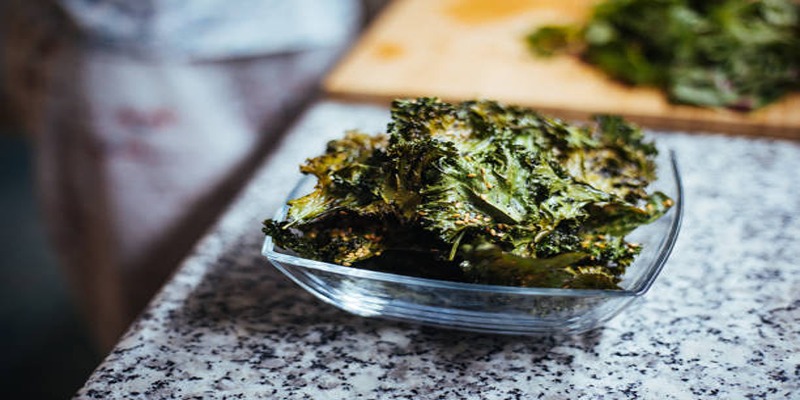The green plant pigment chlorophyll has an intriguing function in human nutrition and health. Immerse yourself in the fascinating world of chlorophyll as we uncover its many aspects in this guide.
Its advantages, however, extend well beyond photosynthesis. The possible health benefits, culinary uses, and cosmetic applications of chlorophyll have brought a lot of attention in recent years. As we delve into this article, we will learn about the many uses of chlorophyll in the kitchen, its possible adverse effects, and the advantages it gives.

Chlorophyll Benefits
Health Benefits
In terms of health, chlorophyll stands head and shoulders above the competition because of its many advantages. Particularly noteworthy is its ability to greatly improve the body's natural detoxification processes. This green pigment has a special property that allows it to bond with heavy metals and poisons, making it easier for our bodies to eliminate them safely. The calming effects of chlorophyll are often a refuge for those suffering from gastrointestinal distress. Chlorophyll pills, when added to a health routine, may alleviate bloating, indigestion, and other gastrointestinal problems.
Potential Therapeutic Applications
In addition to its nutritional benefits, chlorophyll has potential in a range of medicinal uses. Its antibacterial properties are very useful in wound healing, which is a significant field. Quicker recoveries may be possible as a result of chlorophyll's ability to reduce inflammation and infections, which speeds up the body's natural healing processes.
In addition, chlorophyll may be useful for better dental hygiene due to its inherent antibacterial characteristics. Researchers have investigated the possibility of using chlorophyll in mouthwashes and dental products to fight bad breath and gum disease. The significance of chlorophyll in relation to comprehensive health is highlighted by its diverse range of health advantages and therapeutic possibilities.
Chlorophyll Uses
Culinary Uses
The culinary uses of chlorophyll provide both flavor and health benefits to the food industry. Chlorophyll is a great way to add color and health benefits to your recipes. Eat more leafy greens, such as spinach and kale, to increase your daily intake of chlorophyll. You can use these chlorophyll-rich greens in everything from salads to smoothies. Both their attractiveness and the high chlorophyll content are shown by their verdant hue.
Another alternative is to try different combinations of liquid chlorophyll and supplements containing chlorophyll. An easy approach to boost the nutritional value of your food without drastically changing its flavor is to use these concentrated chlorophyll forms.
Herbs that are rich in chlorophyll, such as cilantro and parsley, may be used as tasty garnishes or mixed into sauces and spreads to give your dishes a little more green energy and taste.
A rainbow of green smoothies, colorful salads, and herb-infused foods awaits you when you discover the culinary possibilities of chlorophyll. The dietary advantages of this natural pigment may be enjoyed in a creative and healthful manner.
Cosmetic and Skincare Applications
As a natural and revitalizing ingredient, chlorophyll has found a home in the world of skincare and cosmetics. The idea that natural cosmetics containing chlorophyll might improve the look and health of the skin has led to their meteoric rise in popularity. Plant chlorophyll extracts are a common ingredient in these treatments because of the antioxidant power of the pigment to ward against skin-damaging free radicals and environmental stresses.
Chlorophyll is an excellent supplement to skin care regimens due to its anti-inflammatory and antibacterial properties. Soothing inflamed skin and preventing the development of acne-causing bacteria may promote a brighter complexion and reduce outbreaks.
Also, cosmetics and skincare products made with chlorophyll have a more vibrant and energizing appearance thanks to the green color of the pigment. What matters most is not only the practical advantages of chlorophyll but also its visual attractiveness.

Skin Rejuvenation
Rejuvenating the skin is only one of the many skincare applications of chlorophyll. It is a highly sought-after component in skin care products due to its natural characteristics, which help skin seem healthier and younger.
The antioxidant capacity of chlorophyll is one of its most important features. Protecting the skin from oxidative stress—a cause of premature aging—is aided by this capacity to fight free radicals. Chlorophyll aids in the prevention of wrinkles and fine lines by removing these potentially damaging chemicals.
Products designed to reduce redness, irritation, and inflammation would benefit greatly from the use of chlorophyll due to its calming and soothing properties. Your skin may seem and feel renewed after experiencing this relaxing impact.
Potential Side Effects of Chlorophyll
Gastrointestinal Distress
Although most people have no problems with chlorophyll, there are rare cases when it causes moderate gastrointestinal distress. When using chlorophyll supplements, some people may feel nauseous and have diarrhea or stomach cramps. In most cases, modifying the dose or stopping usage altogether can fix these temporary problems.
Allergic Reactions
Chlorophyll allergies are uncommon but not unheard of. Itching, hives, or facial, tongue, or throat swelling are possible symptoms. People who have an allergy to chlorophyll-rich foods or plants should be careful and see a doctor before using chlorophyll supplements. It is important to take this precaution to avoid any adverse reactions and make sure the product is safe to use.
Interaction with Medications
Some drugs may have their absorption and effectiveness affected by chlorophyll. Patients on blood-thinning medication or those on medicine for thyroid issues should talk to their doctor before adding chlorophyll supplements to their regimen. These consultations may be useful for evaluating possible interactions and making sure that drugs still perform well even when chlorophyll is present. To keep one's health and well-being in check, one must be conscious of these interconnections.
Conclusion
The health benefits of chlorophyll have been well-documented, spanning from its detoxifying and digestive support functions to its possible contributions to wound healing and dental health. Its entry into the beauty and culinary industries has also paved the way for innovative, health-conscious methods.
Be wary, nevertheless, of possible adverse effects, such as esophageal or gastric upset, allergic reactions, or drug interactions. If people are aware of the benefits and risks of chlorophyll, they may use it to their advantage to live healthier, more vibrant lives in an eco-friendly manner.







